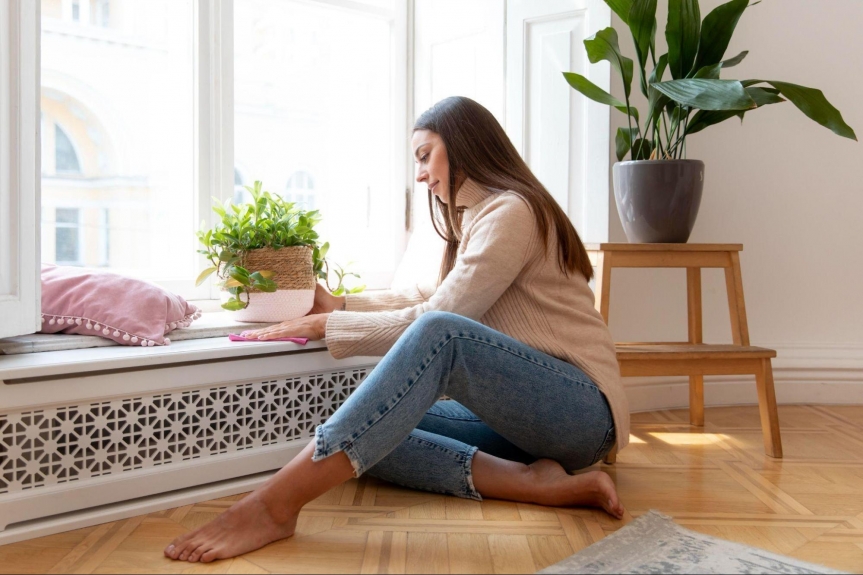When life feels cluttered, it often isn’t just our schedule that’s overflowing, it’s our space. Our surroundings reflect our state of mind, and sometimes the fastest path to calm begins with a single drawer, a corner of the living room, or a hallway that finally feels open again.
When I started reorganizing my home office last spring, I realized how much energy was being drained by objects I rarely used but couldn’t quite part with. I decided to relocate some of those belongings through Distinct Storage, a simple step that immediately made my space feel lighter and my mind clearer. What began as a small organizational project evolved into a deeper lesson: the way we curate our environment can profoundly shape our emotions, focus, and overall sense of well-being.
Why Your Environment Matters More Than You Think
We like to think of mood as something that happens inside us, but it’s also something built around us. Environmental psychology, the study of how physical spaces influence human behavior, has shown that our surroundings can impact everything from stress levels and creativity to sleep quality and social connection.
Natural light, color, texture, noise levels, and organization all send subtle cues to our nervous system. A tidy, well-lit room can trigger calm and clarity; a dim, cluttered one can elevate stress hormones like cortisol. Our brains evolved to seek balance and simplicity. When too many visual elements compete for attention, mental fatigue sets in.
Researchers at Princeton University’s Neuroscience Institute discovered that visual clutter limits the brain’s ability to focus and process information efficiently. In essence, every object in your field of vision is a piece of data your brain must sort, even when you’re not consciously paying attention. A mindful home, one that minimizes unnecessary stimuli, literally frees up cognitive energy.
The Emotional Architecture of Home
Your home is more than shelter; it’s a mirror. Every corner tells a story about what you value, what you’ve outgrown, and what you’re ready to invite next. Yet, many of us accumulate items that no longer serve us, not because we need them, but because they hold memories or represent identities we’ve moved beyond.
The process of creating a mindful home invites self-inquiry. Why do I hold on to this? Does it add beauty or friction to my day? What am I keeping out of habit rather than joy?
Design experts often speak about the “psychology of space”, how different areas in our home elicit distinct emotional responses. Soft textures and rounded shapes create comfort. Minimalist surfaces and symmetry evoke order. Even small adjustments, like adding a plant or re-arranging furniture to face natural light, can transform how we feel the moment we walk in.
According to the U.S. Environmental Protection Agency (EPA), Americans spend roughly 90% of their time indoors. That means our homes are not just backdrops for life, they are life’s primary stage. The air we breathe, the light we absorb, and the visuals we see daily are constant influences on our mood and productivity.
Light, Air, and Sound: The Invisible Design Elements
We often focus on décor, furniture, art, color palettes, but the invisible elements in our home shape us just as deeply.
Light
Sunlight is a natural regulator of our circadian rhythms. Exposure to morning light helps synchronize the body’s internal clock, improving sleep and emotional stability. When natural light isn’t abundant, mirrors, sheer curtains, and warm-tone bulbs can replicate its balancing effects.
Air
Indoor air quality is closely linked to cognitive function. Studies from Harvard’s T.H. Chan School of Public Health found that higher indoor CO₂ levels and pollutants can impair decision-making and concentration. Ventilation, air-purifying plants, and even essential oils can elevate the freshness, and mood, of a space.
Sound
Acoustic comfort often gets overlooked. Constant background noise, from appliances or traffic, can increase fatigue and irritability. Mindful home designers suggest soft materials like rugs, drapes, and wall panels to absorb sound, creating a quieter environment that allows the nervous system to relax.
Clutter: The Hidden Stressor
It’s tempting to dismiss clutter as a mere aesthetic issue, but research shows it carries emotional weight. A 2017 UCLA study found that women who described their homes as “cluttered” exhibited higher levels of cortisol throughout the day. The constant visual reminder of disorganization acts like a background alarm, low-grade but relentless.
Clearing physical clutter helps release mental clutter. It isn’t about living like a minimalist monk; it’s about ensuring that everything in your space has a purpose. Storage solutions, both inside and outside the home, can help maintain this balance. Off-site options like Distinct Storage can serve as transitional space, not to hoard, but to create breathing room as you reassess what truly belongs in your life.
The key is intention. A mindful home isn’t necessarily sparse; it’s intentional. Each item earns its place because it contributes to daily peace or genuine happiness.
Color Psychology and Emotional Zoning

Color has measurable effects on emotion and energy. Soft blues and greens tend to lower heart rate and blood pressure, making them perfect for bedrooms or relaxation zones. Yellows and oranges stimulate optimism and sociability, useful for kitchens and creative spaces.
But there’s no universal rulebook. The best color palette is the one that aligns with your personal energy. Think of your home as an ecosystem of zones: some designed to energize you, others to restore calm. By assigning each area a clear emotional purpose, you teach your body what to expect when you enter.
The same principle applies to scent and texture. Lavender reduces anxiety; citrus invigorates. Natural fabrics like cotton and linen promote ease, while rougher materials like jute or wood ground the senses. Sensory cues remind us that well-being is physical before it becomes mental.
The Productivity Connection
Your environment can make or break focus. Many people discovered this firsthand during the work-from-home transition. A dining table turned into an office may work for a while, but without defined boundaries, the mind struggles to switch off.
A mindful workspace blends form and function: clean surfaces, adequate light, ergonomic seating, and minimal visual noise. Plants can boost creativity and air quality simultaneously. More importantly, designating a clear boundary, a desk, a chair, or even a small nook, sends a neurological signal that “this is where focus happens.”
The American Psychological Association reports that organized environments increase persistence and accuracy, while disorganized spaces fuel procrastination and decision fatigue. Productivity, then, isn’t only about discipline, it’s about context.
Minimalism vs. Mindfulness
It’s easy to equate mindfulness with minimalism, but they’re not synonymous. Minimalism often focuses on reduction, owning fewer things, while mindfulness focuses on awareness: understanding why you own what you do.
A mindful home may have art on the walls and shelves full of books; what matters is that each element adds meaning rather than distraction. Mindfulness encourages a relationship with your surroundings, a sense of gratitude for what you choose to keep, and release for what you don’t.
This approach also extends to digital clutter. The constant presence of devices fragments attention as much as a messy desk. Creating “tech-free zones” in your home helps preserve calm and strengthens real-world connection.
Creating Your Mindful-Home Routine
Small, consistent actions yield the biggest transformation. Consider starting with one of these approaches:
- Morning reset: Spend five minutes tidying or airing out a room. Fresh air and sunlight re-set your mood faster than caffeine.
- Weekly reflection: Choose one area to declutter, a drawer, a shelf, a desktop. Celebrate progress instead of perfection.
- Evening closure: Before bed, return items to their designated spaces. This simple act signals closure for the day.
You can also apply mindfulness to your senses: notice how light changes through the day, how your favorite chair feels, or how a scent affects your mood. Awareness itself turns the ordinary into a grounding ritual.
Sustainable Serenity: Designing with Purpose

Sustainability and mindfulness go hand in hand. Buying fewer, higher-quality items reduces waste and fosters appreciation. When you choose furniture or décor, consider its story: Who made it? How long will it last? Does it serve both function and joy?
Bringing nature indoors, through plants, natural materials, or soft lighting, reconnects you to the rhythms of the world outside. This biophilic approach, widely supported in environmental psychology, has been shown to lower blood pressure, boost creativity, and enhance well-being.
A mindful home is, in many ways, a sustainable one: both are built on respect, for yourself, your environment, and the resources that sustain you.
The Ripple Effect
When your home supports clarity and calm, that balance extends outward. You make decisions more easily. You engage with others more patiently. You feel lighter because the space around you no longer weighs you down.
Building a mindful home isn’t about perfection or Pinterest aesthetics, it’s about alignment. Every drawer you organize, every item you let go of, every intentional choice you make adds up to a deeper sense of agency over your life.
Our environments are silent teachers. They shape how we move, rest, create, and connect. And when we design them with awareness, they remind us daily of what truly matters, peace, purpose, and presence.






